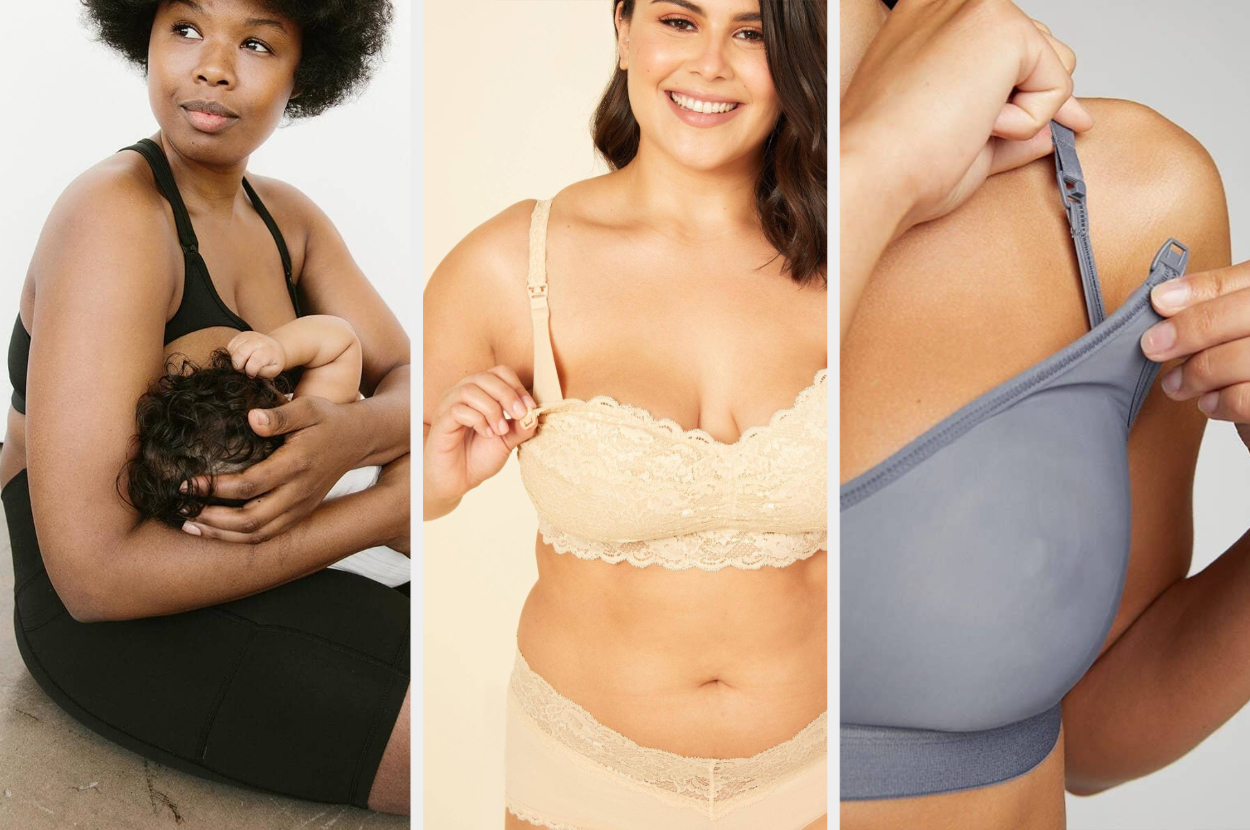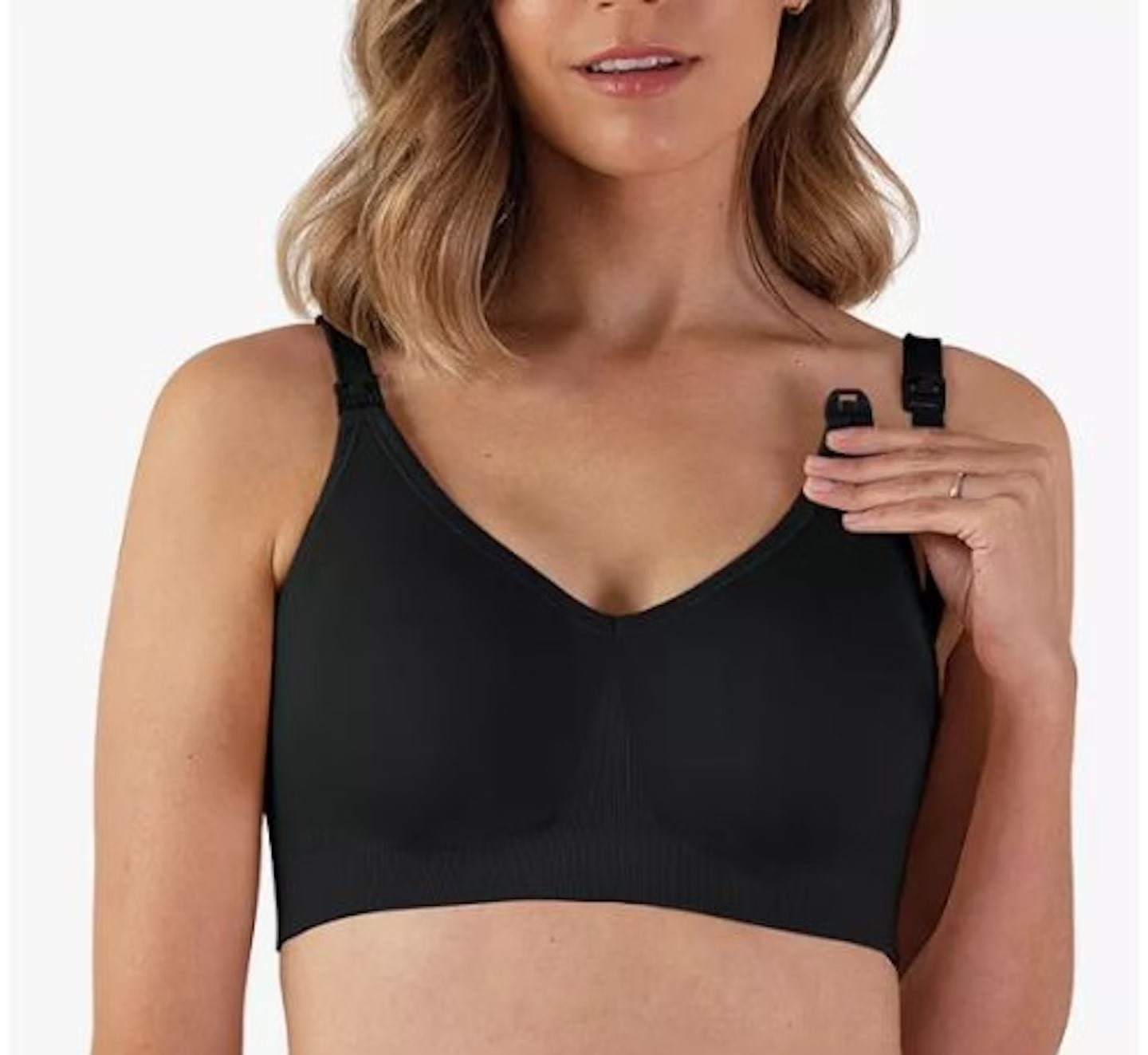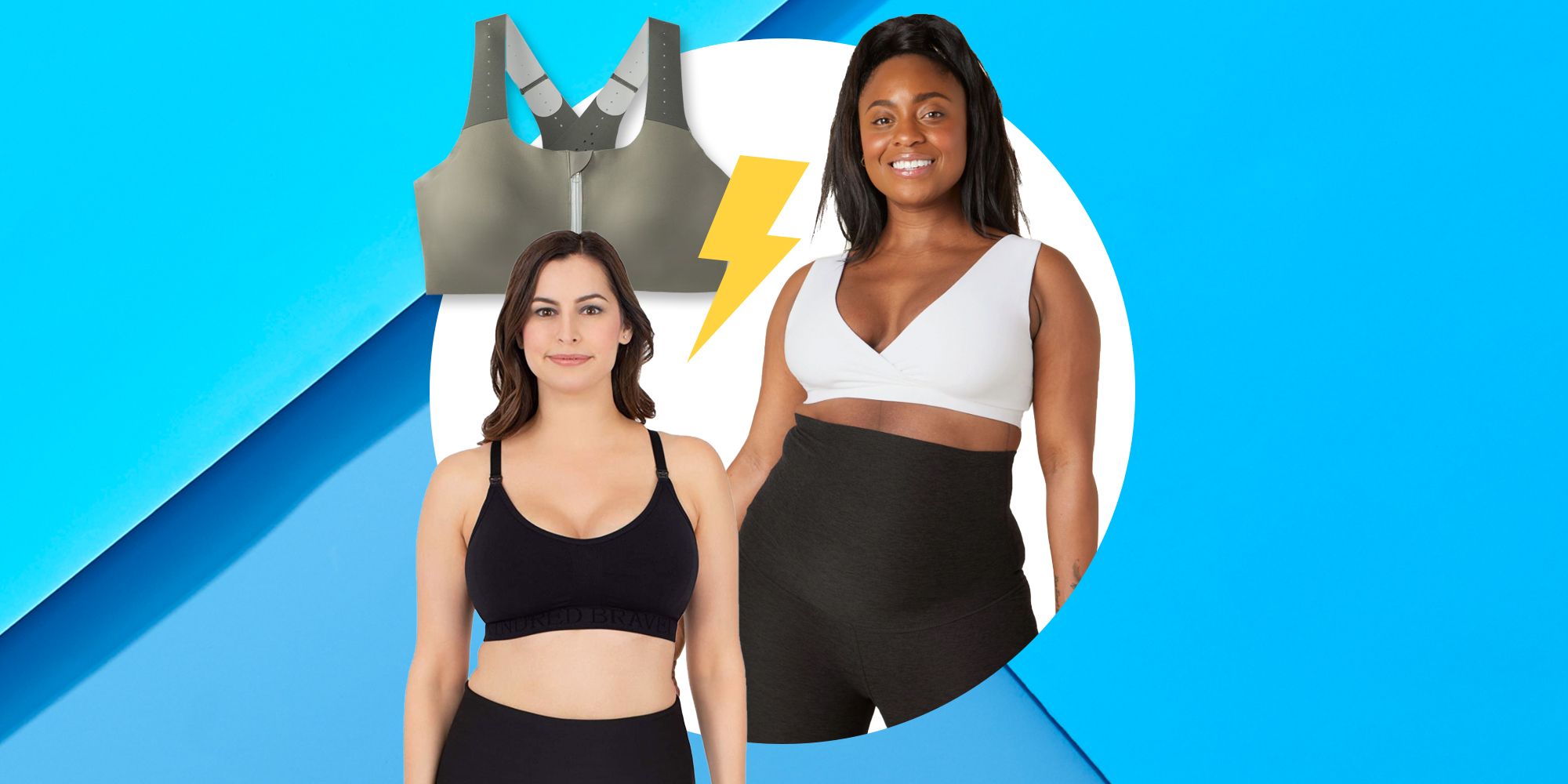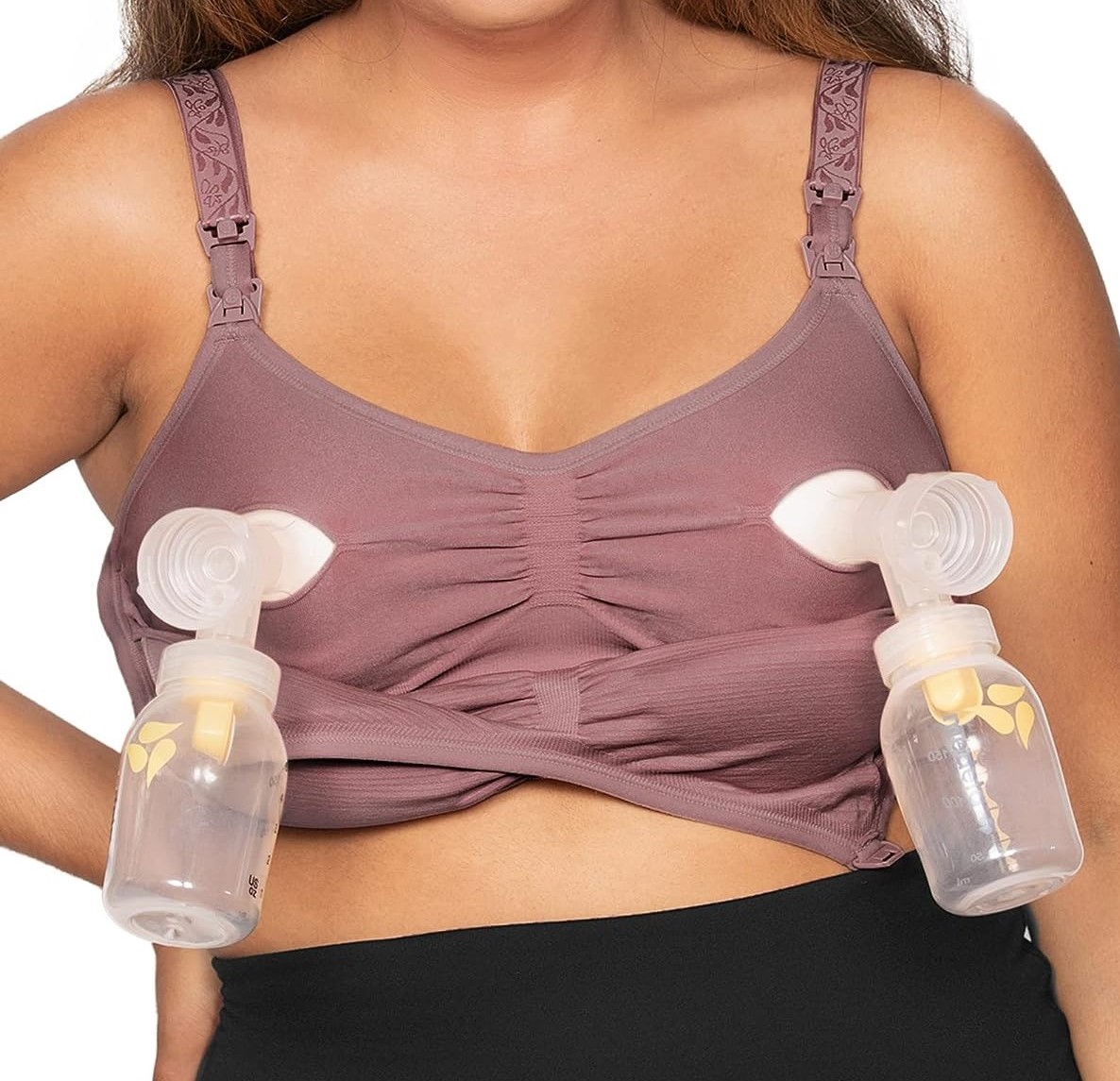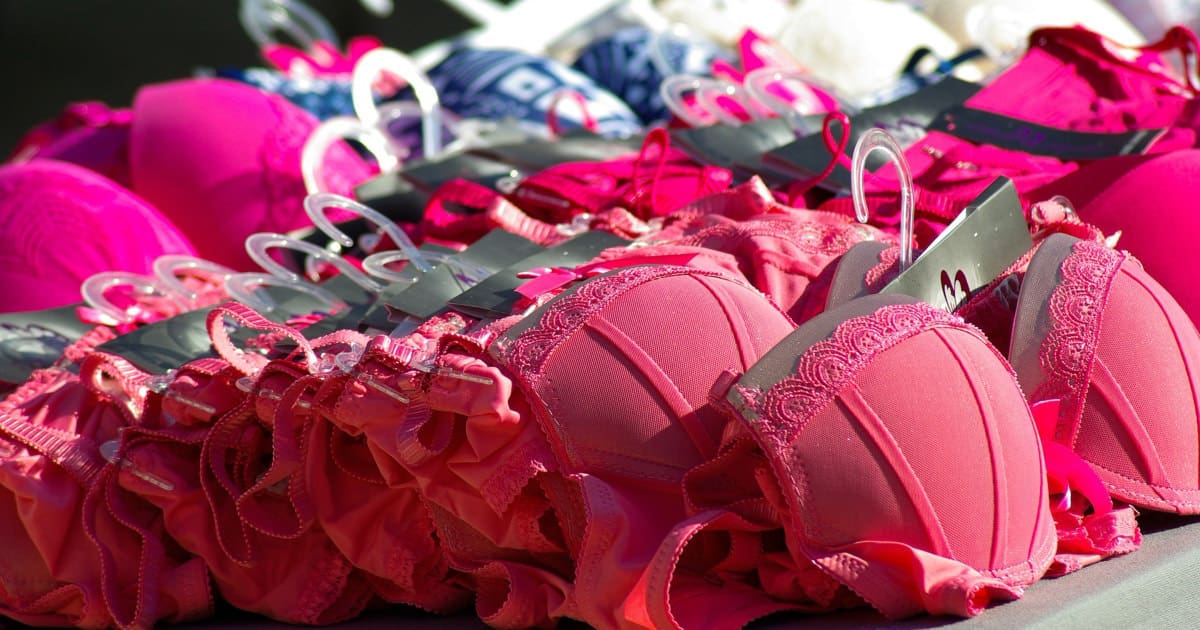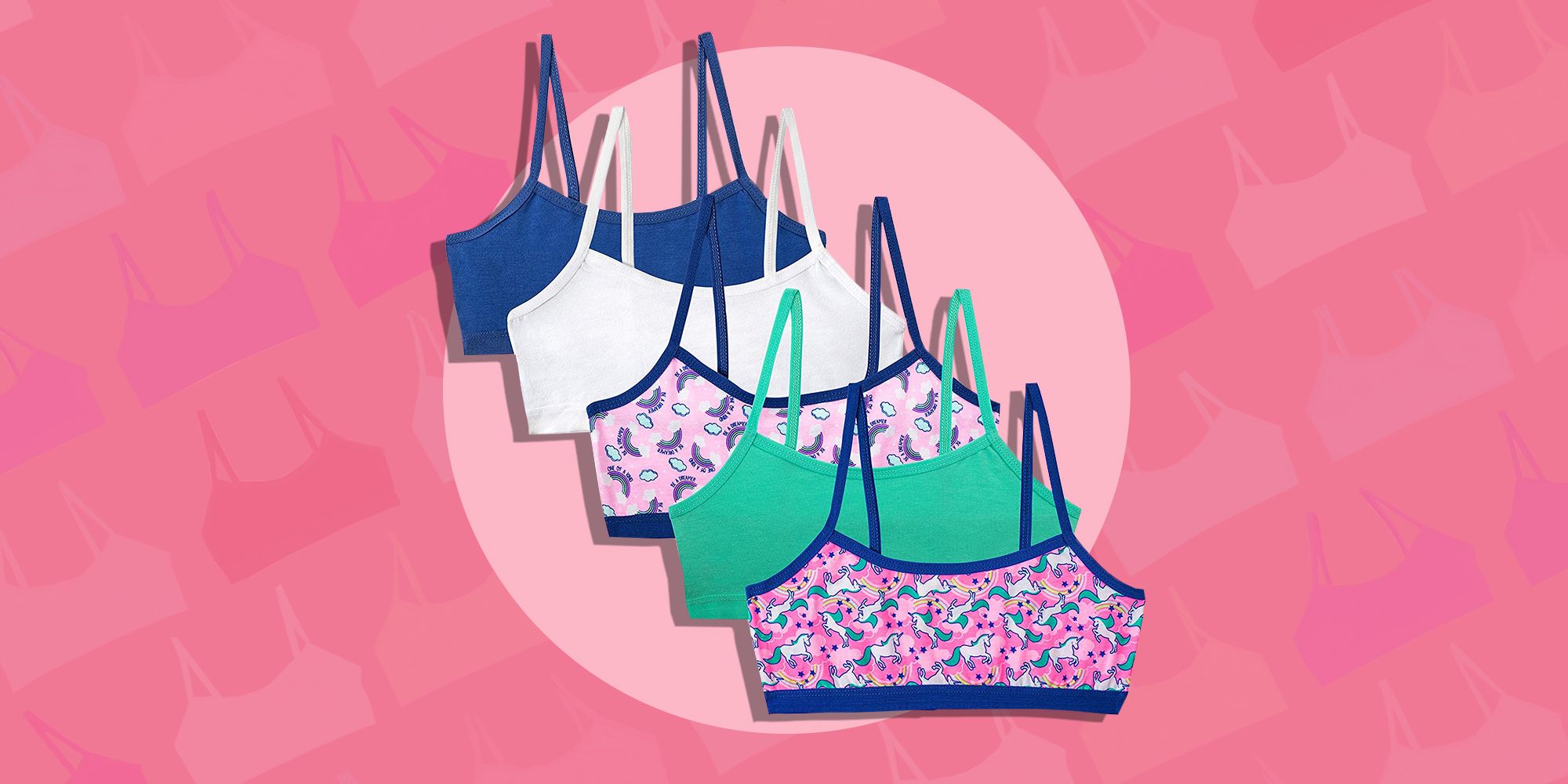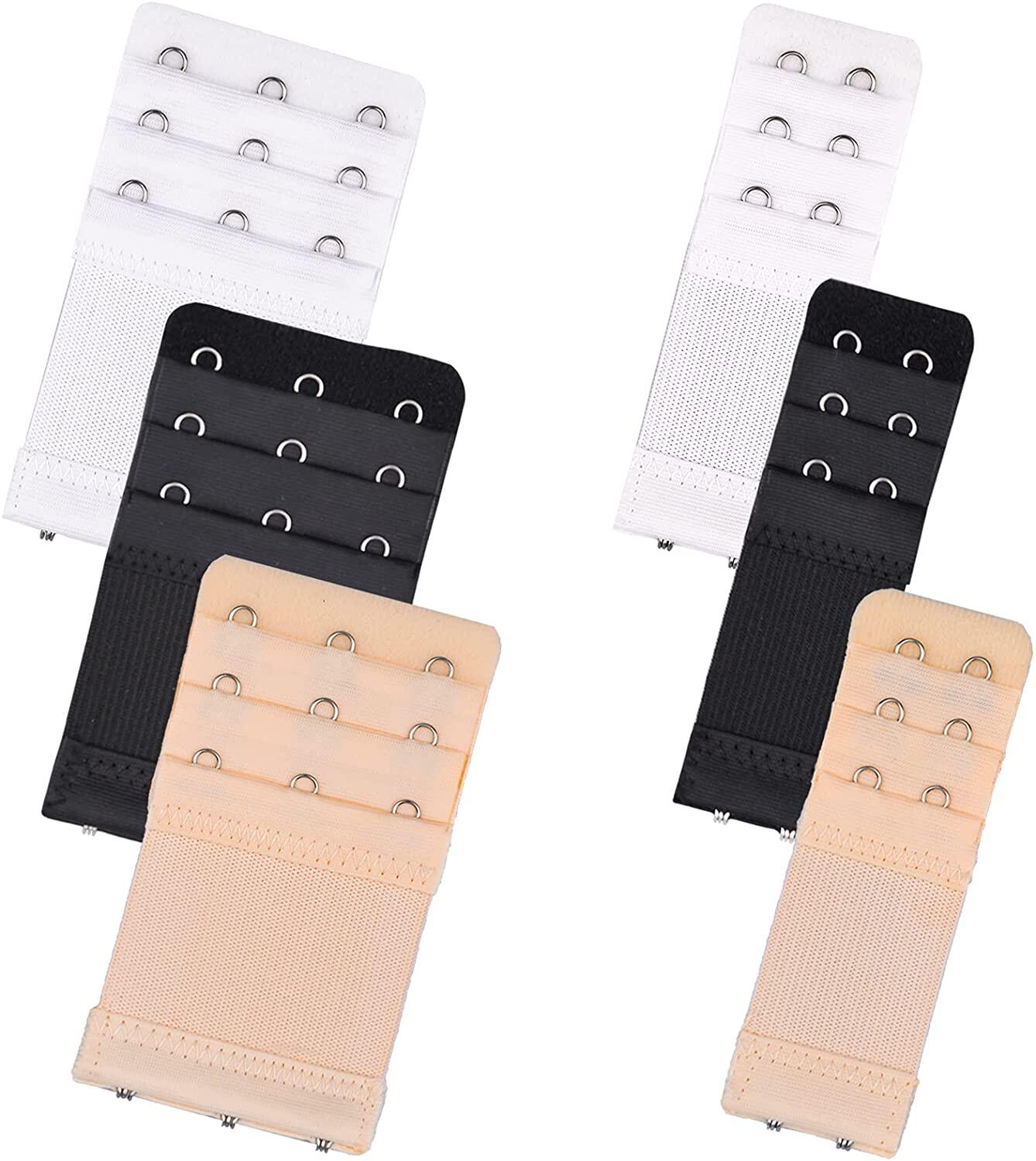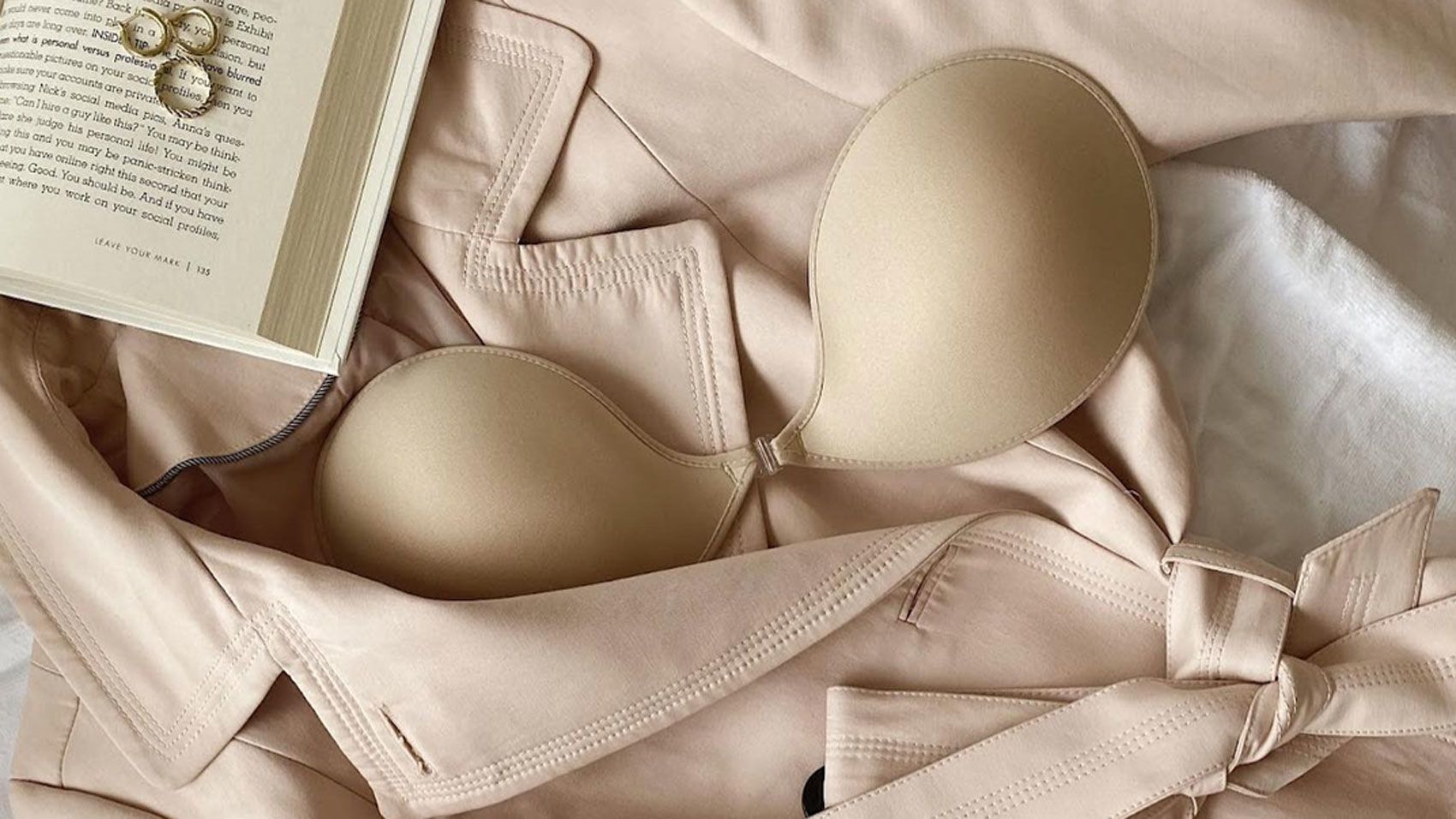Home>Women's Underwear>Bras>When To Buy Nursing Bra
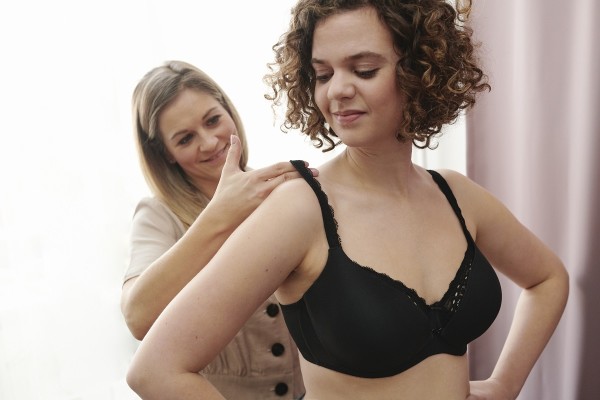

Bras
When To Buy Nursing Bra
Modified: August 6, 2023
Ensure maximum comfort and support with our range of nursing bras. Find out when is the best time to buy nursing bras and make your breastfeeding journey a breeze.
(Many of the links in this article redirect to a specific reviewed product. Your purchase of these products through affiliate links helps to generate commission for Under-tec.com, at no extra cost. Learn more)
Table of Contents
- Introduction
- Understanding Nursing Bras
- Significance of Choosing the Right Nursing Bra
- Physical Changes During Pregnancy and the Postpartum Period
- When to Start Wearing Nursing Bras
- Factors to Consider When Buying Nursing Bras
- Finding the Perfect Fit
- Selecting the Right Style of Nursing Bra
- Common Mistakes to Avoid While Buying Nursing Bras
- Conclusion
Introduction
Welcome to the world of motherhood! As you embark on this beautiful journey, it’s important to prioritize your comfort and well-being. One essential item that should be on your shopping list is a nursing bra. Designed specifically for breastfeeding mothers, nursing bras offer both support and convenience.
During pregnancy and the postpartum period, a woman’s body goes through significant changes. These changes can impact the size and shape of the breasts, making a regular bra uncomfortable and impractical. Nursing bras are specially designed to accommodate these changes, providing the necessary support and ease of access for breastfeeding.
Choosing the right nursing bra can make a world of difference in your breastfeeding journey. It can contribute to your overall comfort, reduce the risk of engorgement and mastitis, and make nursing sessions more convenient for both you and your baby.
In this article, we will explore the factors to consider when purchasing a nursing bra, as well as offer tips on finding the perfect fit and style for your needs. We will also discuss the common mistakes to avoid, ensuring that you make an informed decision when shopping for nursing bras.
So, whether you are an expecting mother preparing for the arrival of your little one or a new mom navigating the breastfeeding journey, read on to discover the world of nursing bras and when to buy them.
Understanding Nursing Bras
Nursing bras are specifically designed to provide support and easy access for breastfeeding mothers. Unlike regular bras, nursing bras typically feature convenient clasps, flaps, or panels that can be easily unfastened to allow for breastfeeding or pumping. This unique design allows for discreet and comfortable nursing sessions, whether at home or in public.
One of the key features of nursing bras is the presence of cups that can be easily opened or pulled aside. These cups are usually made from soft and stretchy materials to accommodate the changing breast size during pregnancy and postpartum. The cups also have support features, such as inner slings or padding, to provide additional support and prevent sagging.
An important aspect of nursing bras is the presence of wider straps and bands. These wider components distribute the weight of the breasts more evenly, reducing strain on the shoulders and back. The bands are often adjustable to accommodate changes in breast size and provide a secure and comfortable fit.
Another consideration when it comes to nursing bras is the choice of fabric. It is ideal to opt for breathable and moisture-wicking materials, such as cotton or bamboo blends, to keep the breasts cool and prevent irritation or fungal infections. Additionally, nursing bras with seamless construction can help prevent chafing or friction on sensitive breast tissue.
Nursing bras come in various styles, including traditional bra styles, sports bras, and sleep bras. Traditional bra styles offer more support and structure, making them suitable for everyday wear. Sports bras provide additional support and can be worn during physical activities or for extra comfort. Sleep bras are designed to be worn at night and provide gentle support without restrictive features.
Understanding the basics of nursing bras is crucial in selecting the right one for your needs. By choosing a nursing bra that fits well and provides adequate support, you can enhance your breastfeeding experience and ensure your comfort throughout this beautiful journey.
Significance of Choosing the Right Nursing Bra
Choosing the right nursing bra is not just a matter of comfort and convenience; it is essential for maintaining breast health and optimizing breastfeeding. Here are some key reasons why selecting the right nursing bra is significant:
- Comfort: During pregnancy and the postpartum period, breasts undergo significant changes, becoming larger and more sensitive. A well-fitted nursing bra with soft, supportive fabric can alleviate discomfort and reduce the risk of issues like nipple soreness or engorgement.
- Proper Breast Support: Nursing bras with wider straps and bands provide proper support to the breasts. This support helps prevent sagging, reduces strain on the back and shoulders, and promotes better posture, leading to increased comfort and reduced long-term discomfort.
- Easy Access: The ability to easily open or pull aside the cups of a nursing bra is crucial for convenient breastfeeding or pumping. A well-designed nursing bra allows for quick and discreet access, making nursing sessions more comfortable for both mom and baby.
- Breast Health: A properly fitting nursing bra can help reduce the risk of issues like clogged milk ducts, mastitis, and milk leakage. The right level of support and gentle compression provided by a nursing bra can help maintain healthy circulation and minimize discomfort or complications associated with breastfeeding.
- Confidence and Convenience: Choosing a nursing bra that fits well and makes you feel comfortable and supported can boost your confidence as you navigate the breastfeeding journey. It allows you to breastfeed in public without feeling self-conscious, ensuring that you can feed your baby whenever and wherever needed.
- Longevity: Investing in high-quality nursing bras can ensure their durability and longevity. Well-made nursing bras will retain their shape and support, even with frequent use and washing, providing comfort throughout your breastfeeding journey.
By recognizing the significance of choosing the right nursing bra, you can prioritize your breastfeeding experience and overall comfort. Remember, a nursing bra is more than just a piece of clothing—it is an essential tool that promotes optimal breastfeeding and supports your well-being as a new mother.
Physical Changes During Pregnancy and the Postpartum Period
Pregnancy and the postpartum period bring about significant physical changes in a woman’s body. Understanding these changes is essential in selecting the right nursing bra that can accommodate these fluctuations and provide the necessary support. Here are some common physical changes that occur during this time:
- Increased Breast Size: One of the most noticeable changes during pregnancy is the increase in breast size. As the body prepares for breastfeeding, the breasts become larger and more sensitive. This increase in size can continue throughout pregnancy and even after the baby is born.
- Fluctuating Breast Volume: Along with increased breast size, many women experience fluctuating breast volume during pregnancy and the postpartum period. Breast engorgement, when the breasts are filled with milk, can cause temporary swelling and discomfort.
- Changes in Breast Shape: The shape of the breasts may also change during pregnancy. They can become fuller and rounder, with enlarged areolas and erect nipples. These changes are a result of hormonal fluctuations and preparation for breastfeeding.
- Tender and Sensitive Breasts: Hormonal changes can make the breasts tender and sensitive. This tenderness can be experienced throughout pregnancy and may continue during the early stages of breastfeeding.
- Weight Gain: Weight gain is a natural part of pregnancy, and it can affect the entire body, including the breasts. The increase in weight can put extra strain on the back and shoulders, emphasizing the need for proper breast support.
- Milk Leakage: It is common for women to experience milk leakage, especially in the early stages of breastfeeding. Leaking breasts can lead to discomfort and wetness, making it important to wear nursing bras that offer adequate absorbency and protection.
Understanding these physical changes is crucial in selecting a nursing bra that can accommodate them. A well-fitted nursing bra with the right level of support, adjustability, and softness can help alleviate discomfort and provide the necessary flexibility for breastfeeding.
Remember, these changes are temporary, and it is important to find a nursing bra that can adapt to your evolving needs during this special time in your life.
When to Start Wearing Nursing Bras
As your pregnancy progresses, you may be wondering when is the right time to start wearing nursing bras. While every woman’s experience is unique, there are some general guidelines to consider:
- During Pregnancy: Many women find it beneficial to start wearing nursing bras during the second or third trimester of pregnancy. This is when the breasts begin to increase in size, and a regular bra may no longer provide the necessary support and comfort. Switching to a nursing bra during pregnancy allows your body to adjust to the new size and shape of your breasts.
- In the Last Trimester: As you near the end of your pregnancy, your breasts may become more sensitive and tender. Wearing a well-fitted nursing bra during this time can alleviate discomfort and provide proper support. It can also help you get accustomed to the nursing bra’s features, such as the easy-to-open cups.
- After Birth: Within a few days after giving birth, your milk will start to come in, and your breasts will undergo changes to accommodate breastfeeding. It is important to have nursing bras on hand before this time to ensure comfort and convenience. Nursing bras can help support engorged breasts, provide easy access for nursing or pumping, and prevent issues like mastitis or clogged milk ducts.
- Throughout the Breastfeeding Journey: Once you start breastfeeding, you will likely be wearing nursing bras regularly. It is recommended to continue wearing nursing bras for as long as you are breastfeeding to ensure proper support, easy access for nursing, and overall comfort.
Keep in mind that every woman’s breastfeeding experience is different, and there is no one-size-fits-all answer to when you should start wearing nursing bras. Pay attention to the changes in your body and breasts, and trust your instincts. If you feel discomfort or notice that your regular bras no longer fit properly, it may be time to transition to nursing bras.
Remember, the goal is to prioritize your comfort and breastfeeding experience. So, don’t hesitate to start wearing nursing bras when you feel it’s the right time for you.
Factors to Consider When Buying Nursing Bras
Choosing the right nursing bra involves considering several factors to ensure the perfect fit, comfort, and functionality. Here are some key factors to consider when shopping for nursing bras:
- Size and Fit: Proper sizing is essential for a nursing bra. Get professionally measured or measure yourself using a reliable sizing guide. Keep in mind that your breast size will fluctuate throughout pregnancy and breastfeeding, so opt for bras with adjustable features like multiple hook and eye closures or stretchy fabric.
- Support: Look for nursing bras that provide adequate support. Wide bands, adjustable straps, and inner slings can offer the necessary support to prevent discomfort and reduce the risk of sagging breasts. The level of support you need may vary depending on your breast size and personal preference.
- Accessibility: Consider the ease of access for breastfeeding or pumping. Nursing bras with convenient clasps or flaps that can be easily opened with one hand allow for hassle-free nursing sessions. Test out the clasps and ensure they are sturdy and reliable.
- Fabric: Opt for soft, breathable fabrics that are gentle on your skin. Natural fabrics like cotton or bamboo blends can help keep your breasts cool and prevent irritation. Additionally, choose nursing bras with moisture-wicking properties to keep you dry and comfortable throughout the day or night.
- Comfort: Comfort is crucial when it comes to nursing bras. Look for seamless construction to minimize chafing or irritation on sensitive breast tissue. Consider padded or lined cups for additional comfort and nipple coverage. Adjustable straps and back closures allow for a customized fit and ensure maximum comfort.
- Style: Nursing bras come in various styles to suit different needs and preferences. Traditional bra styles offer more structure and support for everyday wear, while sports bras provide additional support for physical activities. Sleep bras are designed for nighttime comfort. Choose a style that suits your lifestyle and comfort requirements.
- Durability: Invest in high-quality nursing bras that will withstand frequent washing and wear. Look for bras with durable materials and well-constructed seams. A nursing bra that maintains its shape and support over time will provide long-lasting comfort and support throughout your breastfeeding journey.
By considering these factors when buying nursing bras, you can ensure a comfortable and supportive fit that enhances your breastfeeding experience. Remember, every woman’s needs and preferences are unique, so trust your instincts and choose nursing bras that feel right for you.
Finding the Perfect Fit
Getting the perfect fit is essential when purchasing nursing bras. A well-fitted nursing bra provides optimal support, comfort, and functionality. Here are some tips to help you find the perfect fit:
- Get Professionally Measured: Visit a lingerie store or maternity boutique that offers professional bra fittings. A trained specialist can accurately measure your bust size and provide guidance on the right nursing bra size.
- Measure Yourself: If you prefer to measure yourself at home, make sure to use a flexible tape measure and follow a reliable sizing guide. Measure your underbust (band size) and overbust (cup size) to determine the best fit.
- Consider Fluctuations: Keep in mind that your breast size will fluctuate during pregnancy and breastfeeding. Choose nursing bras with adjustable features, such as multiple hook and eye closures or stretchy fabric, to accommodate these changes.
- Try Different Styles and Brands: Different brands and styles may have slight variations in sizing and fit. It’s a good idea to try on several nursing bras from different brands to find the one that fits you best.
- Check the Band: The band of the nursing bra should fit snugly around your ribcage, providing support without feeling too tight or uncomfortable. Make sure the band lies flat against your skin and does not ride up.
- Adjustable Straps: Ensure that the shoulder straps are adjustable so you can customize the fit to your comfort level. The straps should stay in place without digging into your shoulders.
- Check Cup Shape and Coverage: The cups of the nursing bra should fully enclose each breast without any spillage or gaps. The shape of the cups should complement your breast shape to ensure a comfortable and flattering fit.
- Comfort Test: Move around, stretch, and simulate breastfeeding motions when trying on nursing bras to ensure they provide the comfort and ease of movement you need. Pay attention to any pinching, digging, or discomfort.
Remember, finding the perfect fit may require some trial and error. Don’t hesitate to ask for assistance or try different sizes until you find the one that feels the most comfortable and supportive for you. Prioritizing the fit of your nursing bra will contribute to a positive breastfeeding experience and overall well-being.
Selecting the Right Style of Nursing Bra
Choosing the right style of nursing bra is essential to meet your specific needs and preferences. With various options available in the market, here are some key considerations when selecting the right style:
- Traditional Bra Style: This style closely resembles a regular bra, offering more structure and support. It is suitable for everyday wear and provides a natural shape under clothing. Look for features like easy-to-open cups and adjustable straps for convenience.
- Sports Bra: If you lead an active lifestyle or plan to engage in physical activities while breastfeeding, consider a sports bra style. Sports nursing bras offer additional support and minimize breast movement during exercise. Look for breathable and moisture-wicking fabrics for maximum comfort.
- Sleep Bra: Sleep bras are designed for nighttime comfort and easy access during nighttime nursing sessions. They typically feature a soft and stretchy fabric without any underwire or hooks. Sleep bras provide gentle support and are suitable for light to moderate breast size.
- Tank Top with Built-in Nursing Bra: For a versatile and all-in-one solution, consider tank tops with built-in nursing bras. These tops provide support and coverage for your breasts while offering the convenience of easy nursing access. They can be worn alone or layered with other clothing.
- Wireless or Underwire: Wireless nursing bras provide ultimate comfort and flexibility. They are a popular choice for those who prioritize comfort and want to avoid any pressure on the breasts. Underwire nursing bras, on the other hand, can provide additional support and shaping. It’s important to find an underwire nursing bra that fits well and does not cause discomfort.
- Nursing Bralettes: Nursing bralettes are a stylish and comfortable choice for those who prefer a more relaxed and bralette-like fit. They typically feature a soft, pull-aside cup design and a trendy, non-padded look. Nursing bralettes are ideal for light to moderate breast support.
- Convertible Bras: Convertible nursing bras offer versatility and can be worn in multiple ways. They often come with detachable straps that can be repositioned for different strap configurations, such as traditional, halter, or cross-back styles. This style is perfect for women who want flexibility in their bra options.
Consider your lifestyle, comfort preferences, and the level of support you need when selecting the right style of nursing bra. It is also a good idea to have a mix of styles in your collection to cater to different activities and occasions.
Remember, the most important aspect is finding a nursing bra style that makes you feel comfortable and confident, ensuring an enjoyable breastfeeding experience.
Common Mistakes to Avoid While Buying Nursing Bras
When purchasing nursing bras, it’s important to avoid common mistakes that can lead to discomfort or dissatisfaction. Here are some common mistakes to avoid:
- Not Getting Properly Sized: One of the biggest mistakes is not getting professionally measured or measuring yourself accurately. Wearing the wrong size can result in poor support, discomfort, and an ill-fitting bra.
- Buying Too Early: While it’s essential to have nursing bras ready before giving birth, buying them too early in your pregnancy can result in an incorrect fit. Your breast size will continue to change, so it’s better to wait until your breasts have settled into a more stable size and shape.
- Not Considering Fluctuations: Neglecting to consider the fluctuations in breast size during the day and throughout your breastfeeding journey can lead to a bra that is too tight or too loose. Opt for adjustable features and stretchy fabric to accommodate these changes.
- Choosing the Wrong Style: Selecting a nursing bra style that doesn’t match your needs and preferences can be a disappointment. Consider your lifestyle, clothing choices, and comfort requirements when choosing the right style for you.
- Not Checking the Closure Quality: The closure of the nursing bra should be sturdy and reliable. Blinded by aesthetics or convenience, many people overlook the importance of a secure closure, which can result in an uncomfortable or non-functional bra.
- Compromising on Comfort: Prioritizing style over comfort can lead to dissatisfaction in the long run. It’s important to choose nursing bras made from soft, breathable fabrics and have features that provide proper support and comfort for your unique needs.
- Not Investing in Quality: While it can be tempting to buy cheap nursing bras, it often means compromising on quality and durability. Investing in high-quality nursing bras will ensure better support, longevity, and overall satisfaction with your purchase.
- Not Trying on Multiple Brands: Each brand can have slight variations in sizing and fit. Don’t settle for the first nursing bra you try. Explore different brands and styles to find the one that fits you best.
Avoiding these common mistakes will help you choose nursing bras that fit well, provide the necessary support, and offer optimal comfort. Remember, investing time and effort in selecting the right nursing bras will contribute to a positive and enjoyable breastfeeding experience.
Conclusion
Choosing the right nursing bra is a crucial step in ensuring your comfort, support, and convenience throughout your breastfeeding journey. Understanding the physical changes that occur during pregnancy and postpartum, as well as knowing when to start wearing nursing bras, are important considerations.
Factors such as size and fit, support, accessibility, fabric, comfort, and style should be taken into account when purchasing nursing bras. Avoiding common mistakes, such as not getting properly sized, buying too early, or compromising on comfort, can help you find the perfect nursing bra that meets your specific needs.
Remember, every woman’s breastfeeding experience is unique, so it’s important to prioritize your comfort and well-being when selecting nursing bras. Whether you opt for a traditional bra style, sports bra, sleep bra, or any other style, make sure it provides the necessary support, easy access for nursing, and overall comfort.
By understanding the significance of choosing the right nursing bra and considering the various factors involved, you can enhance your breastfeeding experience and enjoy this special time with your baby.
So, embrace motherhood and the journey of breastfeeding, and find the nursing bras that make you feel comfortable, supported, and confident as you nourish and bond with your little one.
